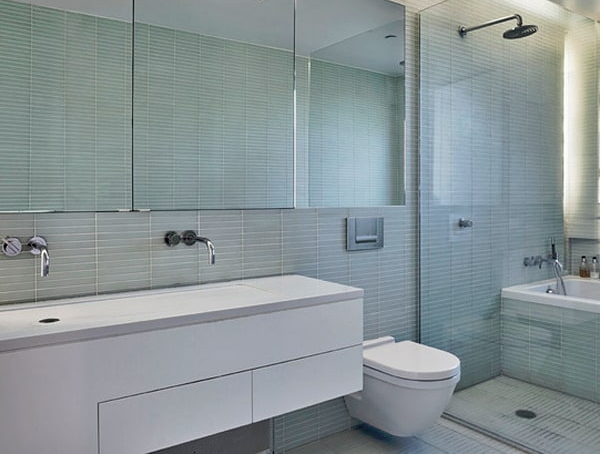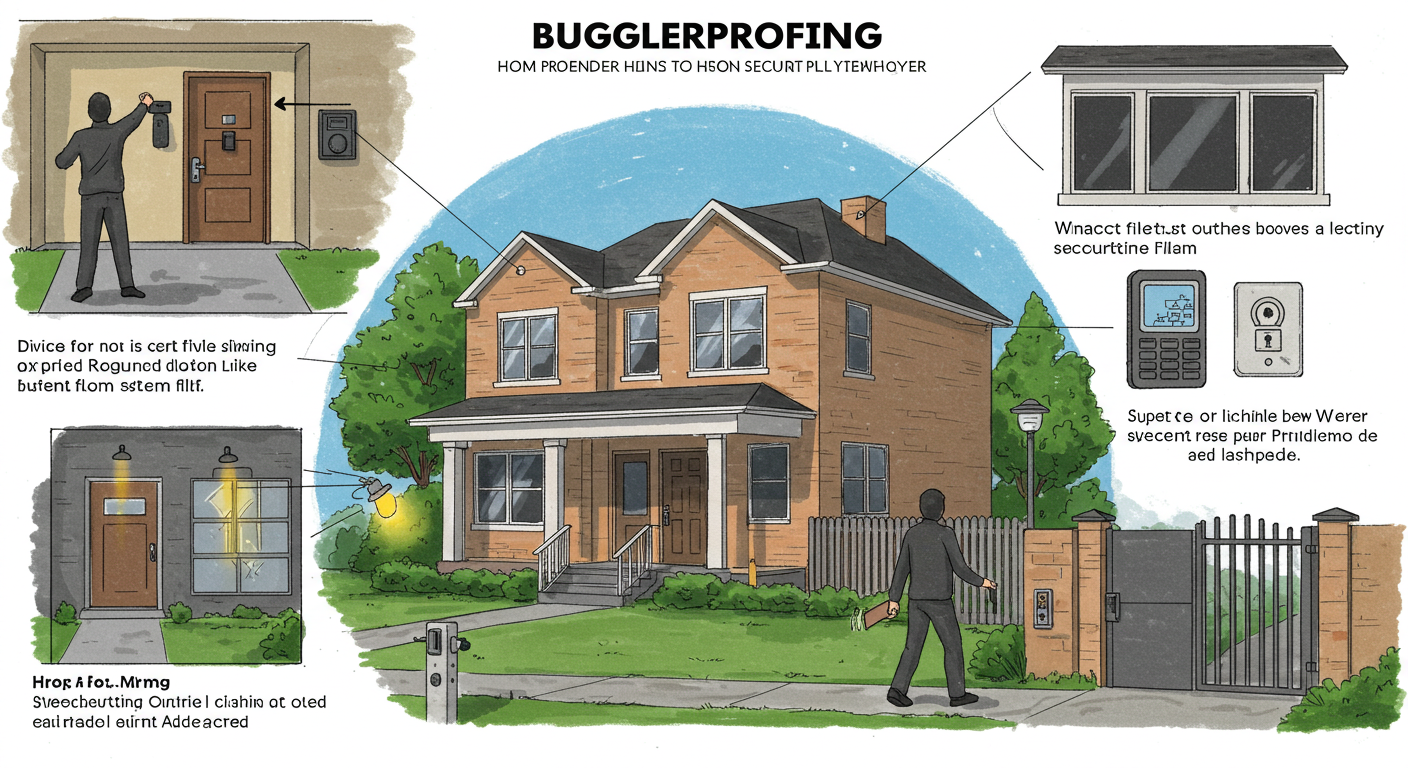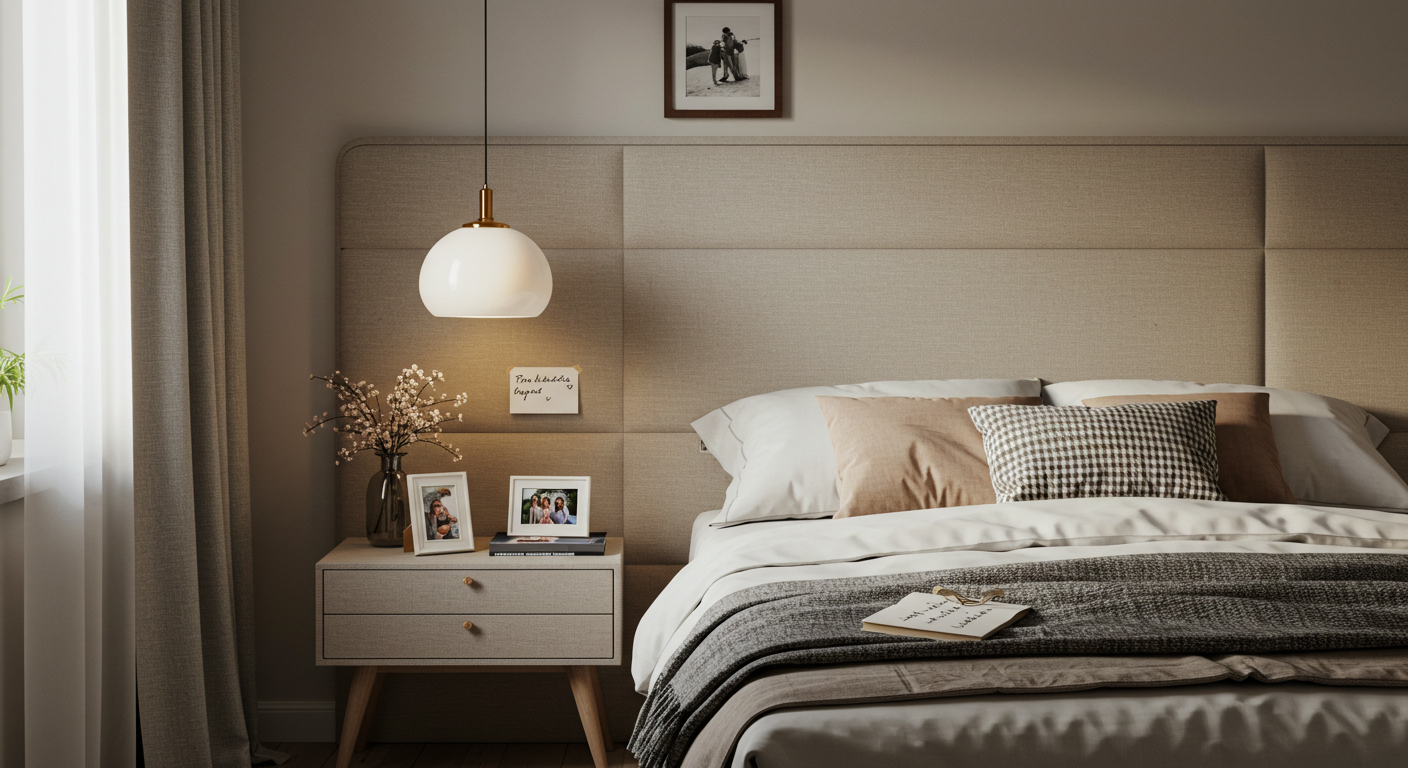Home improvement
Revitalizing Your Garden: Essentials in Drainage, Lighting, and Stability

Transforming an outdoor space requires more than just an eye for design; it involves practical considerations that ensure the terrain remains healthy, safe, and sustainable. Particularly, fundamental aspects such as drainage, lighting, and stability are the pillars upon which a successful landscape renovation stands. Homeowners and landscape professionals alike must realise the significance of integrating these components seamlessly into their garden design to nurture an outdoor setting that thrives across seasons. Here we examine the importance of strip drain systems, outdoor lighting, and geofabric for a comprehensive and enduring garden renovation.
The Critical Role of Effective Drainage
Utility and aesthetic appeal in landscape design begin with effective water management. Excessive water can be detrimental to gardens, causing erosion, waterlogging, and plant root rot. Implementing an efficient drainage system is paramount to safeguarding the garden’s health. A strip drain is an excellent choice for areas where surface water collects. Unlike conventional drainage solutions, a strip drain sits flush with the ground and is nearly invisible, ensuring that it does not disrupt the beauty of the garden. The long, narrow design is not only effective in capturing and diverting water away from critical areas but also complements modern outdoor aesthetics.
Illuminating Beauty and Safety with Outdoor Lighting
As sunsets make way for starlit skies, a garden’s allure need not diminish. Outdoor lighting plays a dual role in landscape renovation. First, it accentuates the garden’s features, creating a captivating ambiance and enhancing the space’s visual appeal long after daylight fades. Second, it is essential for safety, illuminating pathways and darkened areas, and deterring potential intruders. By integrating lighting judiciously, one can sculpt a nocturnal panorama that is both stunning and secure.
Fostering Stability with Geofabric
Ensuring the physical stability of a landscape is as crucial as its visual or functional aspects. Over time, soil can become compacted or erode, compromising the very foundation upon which the garden rests. To combat this, professionals often turn to geofabric. This permeable textile reinforces the soil, separating aggregates and preventing unwanted movement while allowing water and nutrients to pass through. It is an essential layer of protection for structures such as retaining walls and for areas prone to erosion.
Digging Deeper into Drainage Design
When delving into the intricacies of garden drainage, understanding the local climate and topography is essential. Customising solutions like a strip drain are integral to ensuring that water management systems are both functional and fit seamlessly into the fabric of the surrounding landscape. Proactive installation of such systems prevents future complications, avoiding costly remediation efforts and the disappointment of damaged flora.
Lighting Strategies for Aesthetic and Functionality
Selecting the right outdoor lighting fixtures is a balancing act between practicality and style. Solar-powered lights provide an eco-friendly and cost-effective solution, while LED options offer longevity and intense brightness. Strategic positioning, perhaps along a walkway or spotlighting a feature plant, transforms the lighting from mere brilliance into an art form that plays with shadows and silhouettes.
The Unseen Hero: Geofabric in Landscaping
Though seldom visible, geofabric’s role is pervasive beneath the lush surfaces of picture-perfect gardens. This geosynthetic material is instrumental in maintaining the integrity of gravel paths, preventing weeds, and ensuring the longevity of the landscape’s construction elements. Its installation is a meticulous process, but the advantages are far-reaching, ultimately reducing maintenance needs and preserving the garden’s beauty and functionality.
Integrating Drainage Systems with Aesthetic Considerations
The challenge lies in incorporating practical elements like drainage without compromising the garden’s visual harmony. Advanced drainage solutions such as a strip drain are designed for easy concealment, allowing for efficient water management without cluttering the landscape. It is a perfect example of functionality fused with minimalistic design, a principle that modern landscaping continuously strives to uphold.
Leveraging Lighting for Day and Night Appeal
Thoughtful placement of outdoor lighting can extend the enjoyment of a garden into the evening hours. At the strategic intersection of design and security, layered lighting plans can provide ample illumination for activities, simultaneously accentuating the most attractive elements of the garden. A diversity of fixtures, from ambient to task lighting, is crucial for achieving a harmonious night-time environment that is as inviting as it is during daylight.
Strengthening the Foundation with Geofabric Applications
The application of geofabric is not just limited to issues of erosion. It is also a key component in the construction of durable driveways, patios, and walkways. When placed underneath pavers or stones, geofabric acts as a stabilising agent, ensuring that the shifting of material is inhibited and that surfaces remain level and intact over time. As such, it is an indispensable ally in the long-term resilience of hardscape elements.
Conquering Challenging Landscapes with Smart Drainage
For gardens situated in flood-prone areas or with natural slopes, advanced drainage systems are non-negotiable. The introduction of a strip drain, for example, draws water away from structures and delicate plant beds. Its slim profile allows for placement in tight spots or along borders where traditional pipes might be obtrusive. In these challenging landscapes, a well-thought-out drainage design is the key to success.
Creating Ambiance with Outdoor Lighting Selection
The magic of a garden is often in the details—the subtle play of light on leaves, the way paths welcome guests into the green embrace. Choosing the right outdoor lighting fixtures is about enhancing these elements, where every glow and beam contributes to the overall atmosphere. Incorporating fixtures of various sizes and intensities creates depth, setting the stage for a multisensory experience.
Geo Fabric: An Investment in Landscape Longevity
Investing in geofabric may not offer the immediate gratification of aesthetic enhancements, but its benefits are enduring. Like a guardian, it preserves the integrity of the land, offering a shield against natures’ erosive forces. Its role often goes unnoticed, yet it remains a crucial component, a fundamental underpinning that ensures a garden’s longevity and health.
The Symbiosis of Function and Beauty
In the final analysis, the goal of landscape renovation should be the synergy of functionality and visual appeal. Integrating systems such as strip drainage, outdoor lighting, and geofabric underlies the ethos of sustainable landscaping. These foundations, though sometimes invisible, are what allow gardens to flourish and remain robust, day after day, year upon year.
In conclusion, the revitalisation of a garden space is a multifaceted endeavour that intertwines the practical with the aesthetic. Incorporating a strip drain, outdoor lighting, and geofabric is not merely about addressing the needs of the garden; it is about elevating the entire outdoor experience. It is about giving rise to a garden that is not only visually stunning but also ingeniously crafted to stand the test of time.
Home improvement
Is a Heated Seat Bidet Toilet Safe? Common Misconceptions

Heated seat bidet toilets feature various high-tech functionalities, such as adjustable water temperatures, air dryers, and, of course, heated seats. So, they have gained significant popularity over the years, offering users a more comfortable and hygienic bathroom experience.
However, as with any new technology, safety concerns often arise, particularly for households with children or elderly members.
In this article, we will explore common safety concerns and myths about heated seat bidet toilets, focusing on how they affect households with children, seniors, or individuals with specific needs.

1. Common Misconceptions About Heated Seat Bidet Toilets
Despite their growing popularity, several myths about heated seat bidet toilets still exist. Let’s take a look at some of the most common misconceptions:
- Misconception 1: They Are Expensive to Run
A common myth is that heated bidet toilets will significantly increase your electricity bill. However, most of these toilets are energy-efficient, and the heating element consumes only a small amount of energy. The cost of using a heated seat bidet toilet is generally far less than that of running high-power appliances like water heaters. - Misconception 2: They Are Difficult to Install
Some people assume that installing a heated seat bidet toilet requires complex plumbing or electrical work. Most bidet toilets are easy to install, with many models designed for DIY setup. Some even come with plug-and-play functionality, making the installation process simple and quick. - Misconception 3: They Are Only for Luxury Bathrooms
While heated seat bidet toilets may feel like a luxury item, they are available at a range of price points to suit different budgets. Affordable models provide the same benefits as higher-end versions, so you don’t have to spend a fortune to enjoy the comfort and hygiene benefits.
If you’re looking to explore various types of toilets, consider checking out a list of top toilet manufacturers to find high-quality options for your home.
2. Are Heated Seat Bidet Toilets Safe for Children?
One of the most common concerns parents have when considering a heated seat bidet toilet is whether it poses a risk to young children. The main worry is that the heated seat might become too hot and cause burns. However, here are several ways in which these toilets ensure safety for kids:
- Adjustable Temperature: A heated seat bidet toilet offers customizable seat warmth settings, which are typically mild (ranging from 30°C to 40°C). This ensures the seat remains comfortable for both adults and children without overheating. The ability to control the seat’s temperature helps to prevent any risk of burns.
- Built-In Safety Features: High-quality models often come with safety mechanisms that prevent the seat from becoming too hot. For example, once the seat reaches a preset temperature, the system will stop heating automatically or adjust the warmth to ensure safe usage. This feature is especially beneficial in homes with children.
- Supervision for Younger Children: While heated toilets are safe for older children, toddlers or very young kids should always be supervised when using any bathroom fixture, including the toilet with a bidet and a heated seat. Supervision ensures safety, and parents can adjust the settings to meet the comfort and safety needs of their children.
3. Are Heated Seat Bidet Toilets Safe for the Elderly?
For elderly users, heated seat bidet toilets can provide comfort and convenience. However, many older adults may have concerns about the new technology. Let’s explore why a bidet toilet with a dryer and heated seat can be beneficial and safe for seniors:
- Enhanced Comfort: The warmth from a heated seat bidet toilet makes it easier for elderly individuals to sit down and stand up. Cold toilet seats can be uncomfortable, especially for those with arthritis or poor circulation. The heated seat provides a soothing experience that helps reduce discomfort during use.
- Bidet Functionality for Hygiene: For older adults, using a bidet function can improve personal hygiene, as it reduces the need for excessive wiping, which might be painful or challenging. The warm water bidet toilet provides a gentle cleaning experience, offering improved hygiene without the risk of irritation that could come from excessive wiping.
- Electric Safety: Many users are concerned about the risk of electric shock when using a heated bidet toilet, especially seniors. Fortunately, these toilets are equipped with ground fault circuit interrupters (GFCI) to automatically cut off power if an electrical fault is detected, greatly reducing the risk of electrical hazards.
- Elderly-Friendly Design: Many modern toilets with bidet and heated seat models are designed with seniors in mind. For example, some toilets come with easy-to-use remote controls or buttons, allowing elderly individuals to operate the toilet with minimal effort.
4. Are Heated Seat Bidet Toilets Safe for People with Sensitive Skin?
Sensitive skin can be a concern for some individuals, particularly when it comes to new products that come into direct contact with the skin. However, heated seat bidet toilets can be gentle and even beneficial for people with sensitive skin:
- Gentle Water Spray: The water spray from a warm water bidet toilet is gentle and adjustable. This is ideal for individuals with sensitive skin, as the water stream is much less abrasive than traditional toilet paper. The soft, regulated spray minimizes the risk of irritation, rashes, or chafing.
- Comfortable Heated Seats: The warm seat itself can be soothing for people with sensitive skin. In cold weather, a heated seat offers immediate relief from cold toilet seats that might cause discomfort. As long as the temperature is set to a comfortable level, there’s no risk of overheating the seat or causing skin issues.
- Material Safety: Many heated bidet toilet models are made from hypoallergenic materials that are safe for people with sensitive skin. If skin sensitivity is a concern, it’s important to look for products that highlight these features.
5. Can a Heated Seat Bidet Toilet Overheat?
The fear of a heated seat bidet toilet becoming too hot is another common misconception. While some people worry that a heated seat could burn them, modern designs ensure safety in the following ways:
- Thermostatic Control: Heated bidet toilets are equipped with thermostats that regulate the seat temperature, keeping it within a safe and comfortable range. The temperature is typically not hot enough to cause burns, even with prolonged sitting. If the seat ever becomes too warm, most models will automatically adjust or shut off to maintain a safe level.
- Built-in Sensors: Many bidet toilets are designed with safety sensors that monitor the seat’s temperature. If the system detects any issues, such as overheating, it will deactivate the heating element to prevent accidents. This ensures the toilet remains safe for everyone.
- Regular Maintenance: Overheating can occur if the system isn’t properly maintained. To avoid this, it’s recommended that you regularly check and maintain your toilet with a bidet and a heated seat. Most manufacturers will provide guidelines on how to keep the system in good working order.
Conclusion
In conclusion, heated seat bidet toilets are safe for people of all ages, including children and the elderly, when used properly. They are designed with safety features, such as adjustable temperatures and automatic shutoffs, to ensure a comfortable and safe bathroom experience.
By addressing common myths and concerns, it is helpful to clear up any doubts you may have about heated seat bidet toilets. They are not only luxurious but also reliable and safe when installed and used correctly, making them a great choice for modern households looking to enhance their bathroom experience.
Home improvement
Burglar proofing your home

When we think about home security, we often imagine high-tech alarm systems, locks on doors, and maybe even a big dog that barks at anything that moves. But there’s more to burglar-proofing your home than just the basics. The truth is, many homes experience burglaries every year, resulting in not only financial losses but the emotional pain that comes with having your privacy invaded and your safety compromised. Fortunately, there are practical ways to burglar-proof your house that go beyond just installing a security system for the home. Here’s a fresh approach to making your home safer, one step at a time.
The Power of Simple, Everyday Deterrents
Most burglars aren’t looking to break into homes that are clearly secured. They tend to look for places that are easy targets. One of the best things you can do to deter a potential thief is to make your home look occupied—even when you’re not home.
Start by ensuring your yard is well-lit, especially around entry points. Motion-sensing lights can be a great way to surprise intruders, making them think twice before approaching your home. Next, don’t forget about windows and doors. Keep your blinds and curtains closed when you’re not around. Burglars love to scout houses for easy access, and a dark, empty room with a view to an open window is an invitation.
You might also want to consider getting a couple of inexpensive “fake” security cameras or even placing a security system sticker on your window. While these aren’t as effective as an actual security system for the home, they can give the illusion that your house is being monitored, which might be enough to scare off some criminals.
Reinforcing Your Doors and Windows
Your doors and windows are your first line of defense. But surprisingly, many burglars gain access through weak points in these areas. To burglar-proof your home, it’s crucial to make sure your doors and windows are as secure as possible.
Start with your front door. A solid wood or metal door is much harder to break through than a hollow one. Also, make sure the hinges are on the inside, as this makes it much more difficult for burglars to tamper with them. For extra protection, install a deadbolt lock along with a high-quality doorknob lock. Don’t forget to secure the door frame and strike plate with long screws to prevent someone from kicking it in.
Windows are another easy target, especially those that are left open or unlocked. A simple trick is to place a dowel or metal bar in the window track to prevent it from being easily lifted. Also, be mindful of the locks you use. Sliding glass doors, for example, are vulnerable, so consider a security bar or a locking pin to secure the track.
Landscaping and Visibility
Believe it or not, your landscaping could play a major role in burglar-proofing your home. Overgrown bushes, tall trees, and unkempt gardens may provide cover for burglars to hide in while they plan their move. Trim back any shrubbery that blocks the view of your doors or windows from the street. This not only helps you keep an eye on the exterior of your home but also makes it more difficult for a burglar to approach without being seen.
Consider adding thorny bushes or plants around windows and doors. Not only do they make it more difficult to break in, but they also serve as a visual deterrent. If someone sees a bush full of thorns, they might think twice about approaching.
Utilizing Technology to Your Advantage
While simple deterrents like lighting and landscaping are effective, don’t overlook the power of technology when it comes to burglar-proofing your home. A modern security system for the home can do much more than just trigger an alarm if a burglar enters. Many systems now come with features like surveillance cameras, remote monitoring via smartphone, and even doorbell cameras that allow you to see and talk to people at your front door, even when you’re not at home.
You can also install smart locks that allow you to lock and unlock your doors from your phone. This is especially useful if you’re coming home late at night and want to ensure that all your doors are locked, or if you want to grant someone access while you’re away. Smart doorbells, which include video and motion sensors, allow you to keep an eye on who’s approaching your home, helping you spot suspicious behavior before it escalates.
Secure Your Garage and Outbuildings
Many people forget to secure their garages or outbuildings, but these areas can be an easy entry point for burglars. A garage door opener, for instance, can be hacked or simply broken into. Make sure your garage door is equipped with a sturdy lock and avoid leaving keys, valuables, or tools in plain sight inside. Install a motion sensor light in the garage to make it less inviting for burglars at night.
If you have a shed or other outbuildings on your property, treat them with the same level of care as your home. Secure windows and doors with high-quality locks, and consider installing motion lights or even a small alarm system.
Building a Community of Awareness
One of the most effective ways to prevent crime in any neighborhood is to foster a sense of community awareness. Talk to your neighbors about looking out for each other, especially if you’re planning to be away for an extended period. Burglars often target homes that are isolated or unmonitored, so having a neighborhood watch in place can go a long way in keeping your property safe.
Sharing information about unusual activity or suspicious people in the area can help prevent crimes before they happen. Encourage neighbors to report any strange vehicles, unfamiliar faces, or anything that seems out of place.
Conclusion
Burglar-proofing your home doesn’t require a major overhaul or expensive technology; sometimes, it’s the simple things that make the biggest difference. By implementing a combination of practical steps, such as reinforcing doors and windows, adding lighting, securing your garage, and utilizing technology, you can significantly reduce your chances of becoming a victim of burglary. Remember, burglars are looking for easy targets, so make your home one that’s too much trouble to mess with. With a little effort and a few thoughtful changes, you can make your home a safer, more secure place to live.
Home improvement
Personalised Interiors: Creating a Home That’s Uniquely You

A home should be more than just a place to live—it should be a reflection of your personality, lifestyle, and values. Personalised interiors go beyond trends to create spaces that feel authentic, comfortable, and uniquely yours. Whether you’re designing a new home or revamping your existing space, thoughtful choices in colours, materials, and furnishings can make all the difference.
The Power of Personalisation in Interior Design
Personalised interiors allow homeowners to express their individuality while enhancing the functionality of their spaces. Customising your home isn’t about following design rules—it’s about curating a space that aligns with your tastes and daily routines.
A personalised home should reflect:
- Your Lifestyle: The way you live should shape your space. Whether you enjoy hosting lively gatherings with friends, need a peaceful retreat to unwind after a long day, or require a productive and functional home office, your design should reflect and support your daily routines and priorities. Creating a home that complements your lifestyle ensures comfort and ease in every aspect of your life.
- Your Interests: Your home is an extension of who you are. Displaying art collections, travel souvenirs, cherished books, or family heirlooms can infuse your space with personality and meaning. These elements not only add character but also tell your unique story, making your home feel truly yours while sparking conversations with visitors.
- Your Aesthetic Preferences: Your interiors should resonate with your sense of style. Whether you’re drawn to clean lines and simplicity in a minimalist design, enjoy the bold mix-and-match approach of eclectic decor, or prefer the timeless elegance of classic styles, your choices should make you feel relaxed, inspired, and right at home in your surroundings.
Key Elements of a Personalised Home
1. Colour Psychology and Mood
Colour plays a significant role in setting the tone of your home. Different hues evoke different emotions—soft blues and greens create a calming atmosphere, while bold reds and yellows add energy and vibrancy. Consider using accent walls or statement furniture to introduce colours that resonate with your personality.
2. Custom Furniture and Unique Pieces
Mass-produced furniture may serve its purpose, but investing in bespoke pieces can elevate your home’s uniqueness. Custom-built shelving, one-of-a-kind coffee tables, or handcrafted décor items can add a distinct personality to your interiors.
3. Meaningful Décor and Accessories
Personalised interiors often incorporate meaningful décor elements. Displaying travel souvenirs, vintage finds, or artwork from local artists can transform a generic space into something truly personal. Even everyday items like throw pillows and rugs can be chosen with patterns and textures that reflect your style.
4. Layering Textures for Depth and Warmth
A personalised home isn’t just about visual appeal—it’s also about how it feels. Incorporating tactile diversity through materials like wood, stone, linen, and velvet adds dimension and warmth to a space. Mixing smooth and rough textures can create an inviting and balanced environment.
5. Lighting That Complements Your Space
Lighting is one of the most underrated aspects of personalisation. From statement chandeliers to warm bedside lamps, lighting can transform the ambience of a room. Layering different light sources—such as overhead lighting, task lighting, and ambient lighting—creates flexibility for different moods and activities.
Bringing It All Together with Expert Guidance
Creating a home that truly reflects your personality requires thoughtful curation, and professional expertise can help bring your vision to life. Novari Collective interior design services specialise in tailoring spaces to the unique preferences of homeowners, ensuring a cohesive and personalised outcome.
From selecting the right furniture to balancing textures and lighting, working with a professional ensures that every detail is aligned with your vision. Whether you prefer a modern aesthetic or a more traditional approach, expert designers can help translate your ideas into a well-executed design that feels uniquely yours.
A Reflection of You
Your home should be a reflection of you—your lifestyle, experiences, and preferences. By embracing personalised interiors, you can create a space that feels truly authentic and comfortable. Thoughtful details, curated décor, and professional guidance can transform any house into a home that tells your story. Ready to design a space that’s uniquely yours? Start by making intentional choices that align with your personality and daily life.
-

 GENERAL1 year ago
GENERAL1 year agoDiscovering the Artistic Brilliance of Derpixon: A Deep Dive into their Animation and Illustration
-

 Posts2 years ago
Posts2 years agoSiegel, Cooper & Co.
-

 FASHION2 years ago
FASHION2 years agoThe Many Faces of “λιβαισ”: A Comprehensive Guide to its Symbolism in Different Cultures
-

 Lifestyle2 years ago
Lifestyle2 years agoPurenudism.com: Unveiling the Beauty of Naturist Lifestyle
-

 Lifestyle2 years ago
Lifestyle2 years agoBaddieHub: Unleashing Confidence and Style in the Ultimate Gathering Spot for the Baddie Lifestyle
-

 HEALTH1 year ago
HEALTH1 year agoTransformative Health Solutions: Unveiling the Breakthroughs of 10x Health
-

 Entertainment2 years ago
Entertainment2 years agoGeekzilla Podcast: Navigating the World of Pop Culture, Gaming, and Tech
-

 Lifestyle11 months ago
Lifestyle11 months agoSandra orlow: Unraveling the Story of an Iconic Figure
